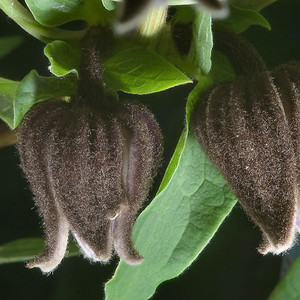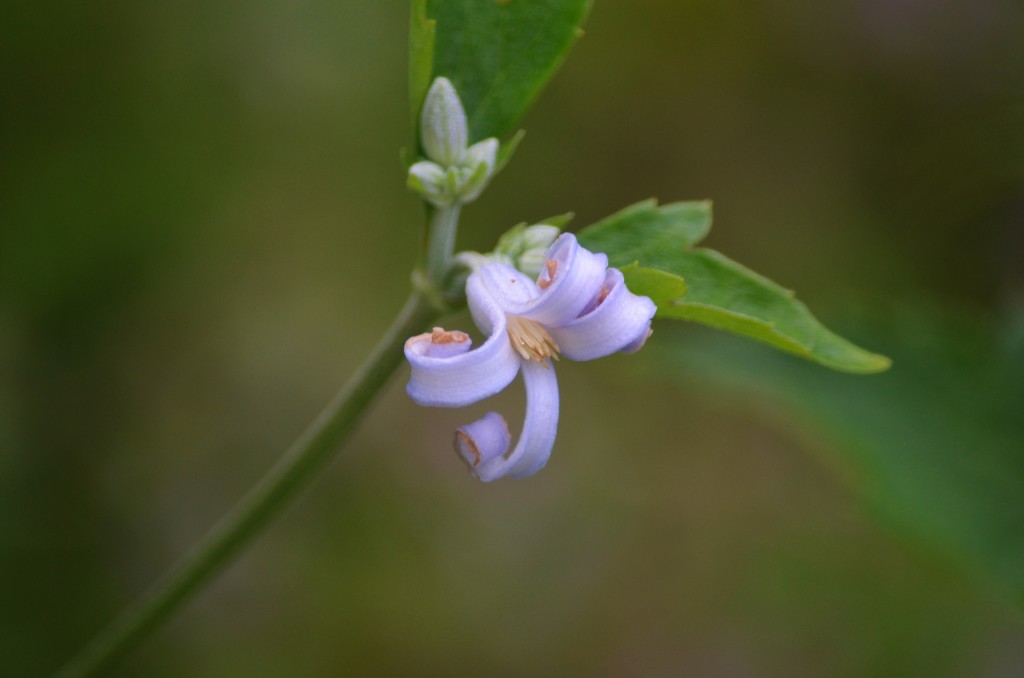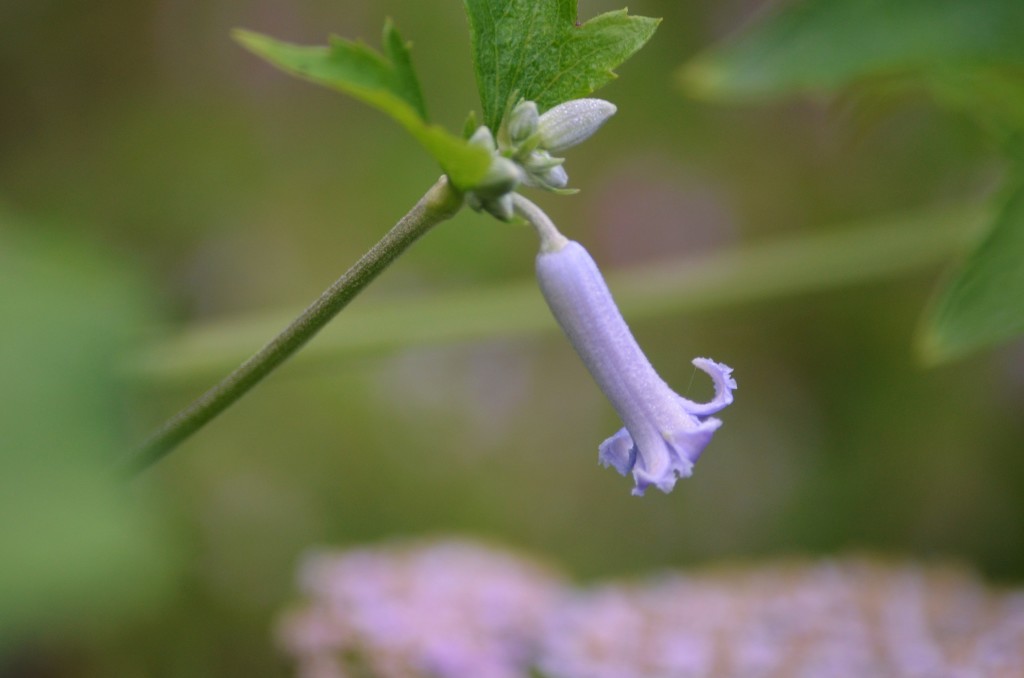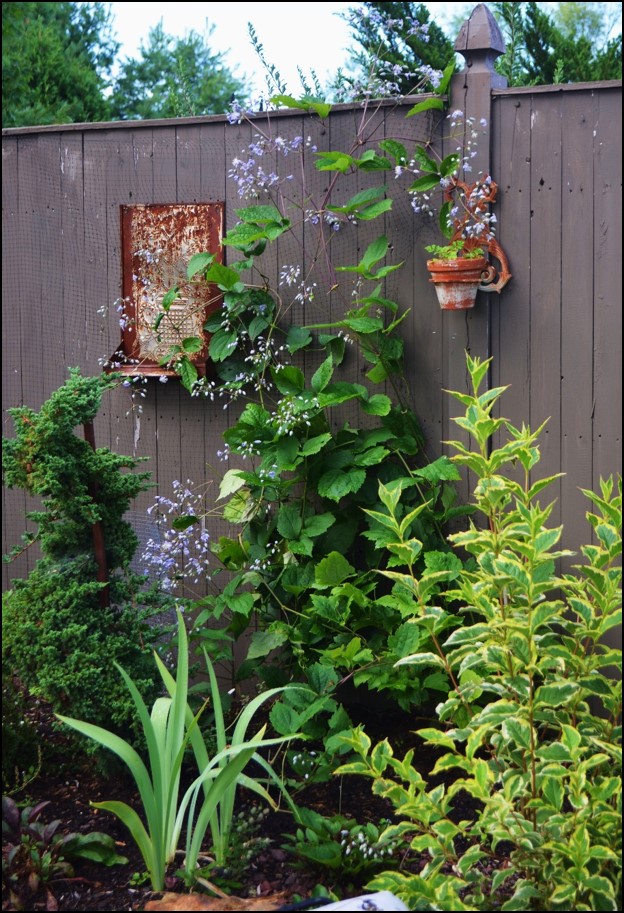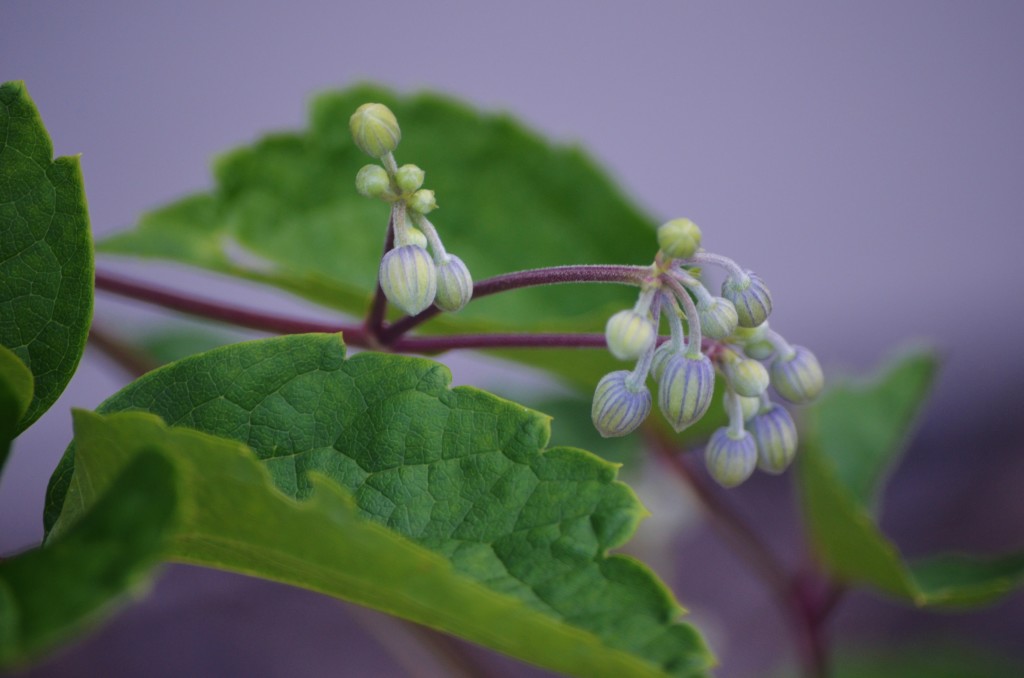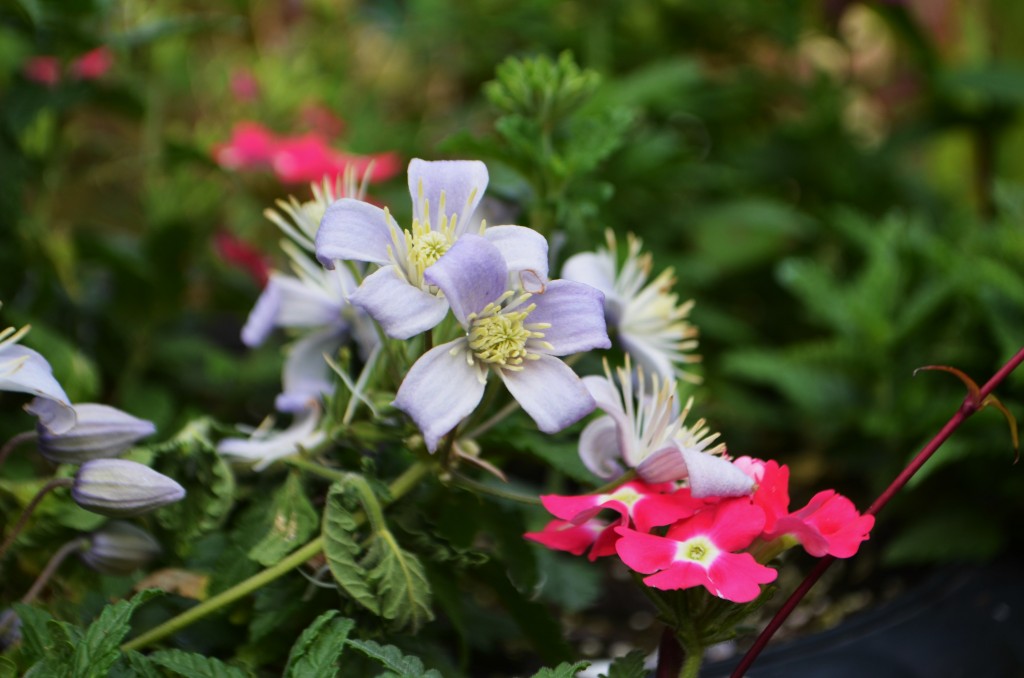the viorna group is unusual in that instead of having lots in common, these vines differ in cultivation and appearance. They can be woody vines, sub -shrubs, or more like herbaceous perennials, some need damp soil, some like it hot and dry, and for the most part they all have at least one fussy requirement that needs your attention for them to grow well in a garden setting. I know this is supposed to be about easy to grow plants, but some of these requirements might fit right in with your garden conditions which will of course make them easier to grow.
interesting fact; many of our native ( to the US ) species of clematis get lumped here including texensis, c. crispa, c adisonii, c. pitcheri, c. viorna c. glaucophylla and c. reticulata reminding us yet again that just because a plant is native doesn’t mean it will grow either well or easily in your yard.
let’s talk about one of the most beautiful yet frustrating, c. texensis . 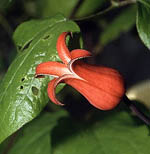 Clematis texensis is a beautiful bright red and has been used in breeding to attain variations of the color . You will not find the straight species anywhere in retail nurseries as it is most difficult to propagate and rare even among collectors. The hybrids of texensis, however, are often found for sale and are bear striking flowers on the reddish pink side . A few well known varieties are
Clematis texensis is a beautiful bright red and has been used in breeding to attain variations of the color . You will not find the straight species anywhere in retail nurseries as it is most difficult to propagate and rare even among collectors. The hybrids of texensis, however, are often found for sale and are bear striking flowers on the reddish pink side . A few well known varieties are
Duchess of Albany
(image from Brushwood Nurseries where you can purchase many of these plants)
Princess Diana (image from RHS)
Princess Kate (image from crocusuk)
and Gravetye Beauty
All of these vines are susceptible to powdery mildew which will discolor and eventually defoliate the vines. I tried for years to get Gravetye Beaty to look good in the garden , alas, this year I gave up and ripped my two vines out before I could change my mind and I really feel good about that decision. It became such an eye sore no matter what I tried and although I loved the flowers , that just wasn’t enough to warrant keeping them. I have had much better luck with Princess Diana and the Duchess of Albany, I would choose these for easy care plants if grown in full sun.
(For clarity I will make what seems like a stupid statement here, clematis texensis gets put in the Viorna group yet most of it’s hybrids are in the Texensis group. No one said this was easy lol)
Clematis viorna (AKA vasevine, leather flower) is a species that is highly variable in form and flower and due to some on going field research being done is about to get split into many new species and sub species . I waiver in my loyalty to either lumping the species together as they currently are (making it easier to remember and ID )and splitting them up which requires me to learn more names but is better for accuracy.
c. viorna has adorable leathery pinkish bells and spectacular feathery seed heads and can be quite vigorous (read:easy)

C.crispa, is sometimes called Swamp leather flower , and that will give you a clue what differentiates this one from the group….water. Unlike mot clematis , It likes wet soil and can even tolerate being water logged which would kill it’s cousins. . If you have a spot that meets this requirement I would rate this plant as easy to grow. It sports recurved white-lilac bells and the vine tends to be pretty open and sparse. The one thing clematis is the viorna group definitely share is the adorableness of their flowers. Petite and sweet.
Photo again from Brushwood. I did finally dare to plant this clematis here in my dry sandy soil, it is right next to the hose and and although not flowering yet , it is alive and growing , fingers crossed.
Clematis odoriba is a cross between viorna and crispa. It is and extremely free flowering vine whose intense pink flowers face slightly upward making them a wonderful addition to my back arbors where we can see the top-most blooms over the fence. I adore this vine, it is ignored out back and is thriving in neglect .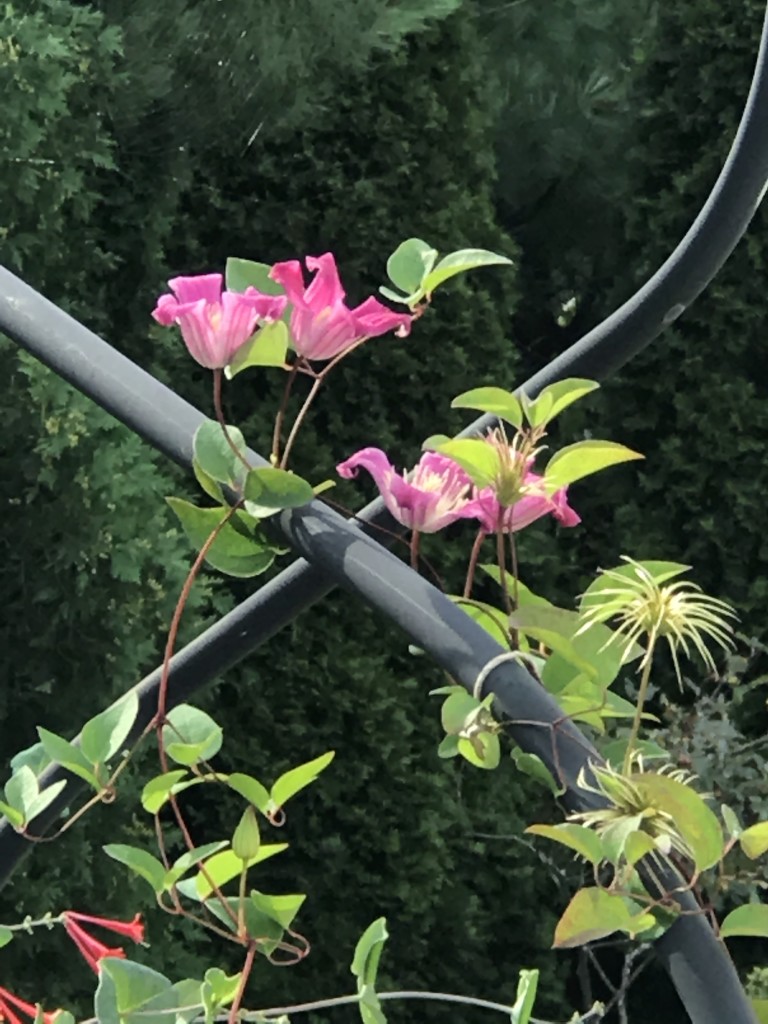
the crappy picture is from my phone which usually does a better job.
Another from this group I grow here is clematis fusca, which as soon as I figure out just what it is looking for to bloom and be happy I will let you know. So far every location and soil amendment etc I have tried has just shown me what makes it sulk and die back. I look forward to seeing the very unusual flowers in the garden as opposed to plant catalogs
So keep in mind, if you have wet or heavy rich soil , try clematis crispa.
Baking sun?? plant any of the c. texenis hybrids
If you have average soil you can easily grow c. viorna and c. odoriba.
and if you successfully grow c. fusca, congrats to you! Please fill me in on what it likes, I am all ears!!!
